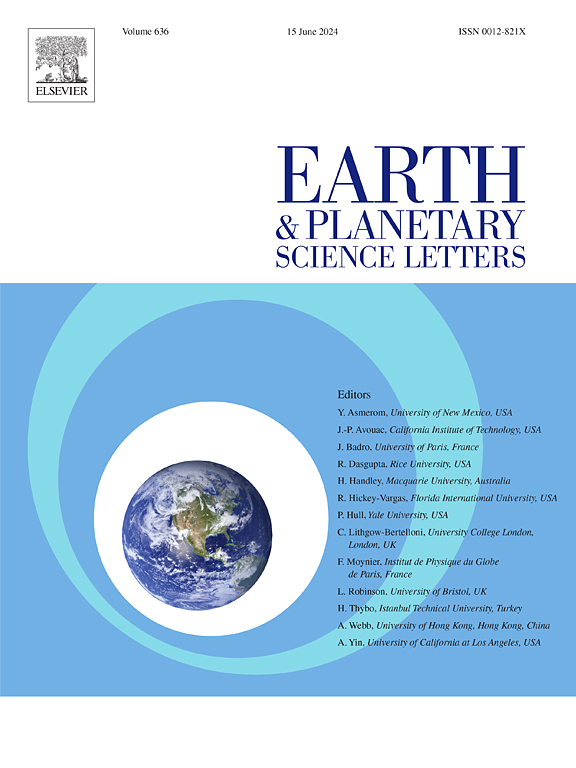Volatile loss history of the Moon from the copper isotopic compositions of mare basalts
IF 4.8
1区 地球科学
Q1 GEOCHEMISTRY & GEOPHYSICS
引用次数: 0
Abstract
The abundances and isotopic signatures of volatile elements provide critical information for understanding the delivery of water and other essential life-giving compounds to planets. It has been demonstrated that the Moon is depleted in moderately volatile elements (MVE), such as Zn, Cl, S, K and Rb, relative to the Earth. The isotopic compositions of these MVE in lunar rocks suggest loss of volatile elements during the formation of the Moon, as well as their modification during later differentiation and impact processes. Due to its moderately volatile and strongly chalcophile behaviour, copper (Cu) provides a distinct record of planetary accretion and differentiation processes relative to Cl, Rb, Zn or K. Here we present Cu isotopic compositions of Apollo 11, 12, 14 and 15 mare basalts and lunar basaltic meteorites, which range from δ65Cu of +0.55±0.01 ‰ to +3.94±0.04 ‰ (per mil deviation of the 65Cu/63Cu from the NIST SRM 976 standard), independent of mare basalt Ti content. The δ65Cu values of the basalts are negatively correlated with their Cu contents, which is interpreted as evidence for volatile loss upon mare basalt emplacement, plausibly related to the presence Cl- and S-bearing ligands in the vapour phase. This relationship can be used to determine the Cu isotopic composition of the lunar mantle to a δ65Cu of +0.57 ± 0.15 ‰. The bulk silicate Moon (BSM) is 0.5‰ heavier than the bulk silicate Earth (+0.07 ± 0.10 ‰) or chondritic materials (from -1.45 ± 0.08 ‰ to 0.07 ± 0.06 ‰). Owing to the ineffectiveness of sulfide segregation and lunar core formation in inducing Cu isotopic fractionation, the isotopic difference between the Moon and the Earth is attributed to volatile loss during the Moon-forming event, which must have occurred at- or near-equilibrium.
求助全文
约1分钟内获得全文
求助全文
来源期刊

Earth and Planetary Science Letters
地学-地球化学与地球物理
CiteScore
10.30
自引率
5.70%
发文量
475
审稿时长
2.8 months
期刊介绍:
Earth and Planetary Science Letters (EPSL) is a leading journal for researchers across the entire Earth and planetary sciences community. It publishes concise, exciting, high-impact articles ("Letters") of broad interest. Its focus is on physical and chemical processes, the evolution and general properties of the Earth and planets - from their deep interiors to their atmospheres. EPSL also includes a Frontiers section, featuring invited high-profile synthesis articles by leading experts on timely topics to bring cutting-edge research to the wider community.
 求助内容:
求助内容: 应助结果提醒方式:
应助结果提醒方式:


